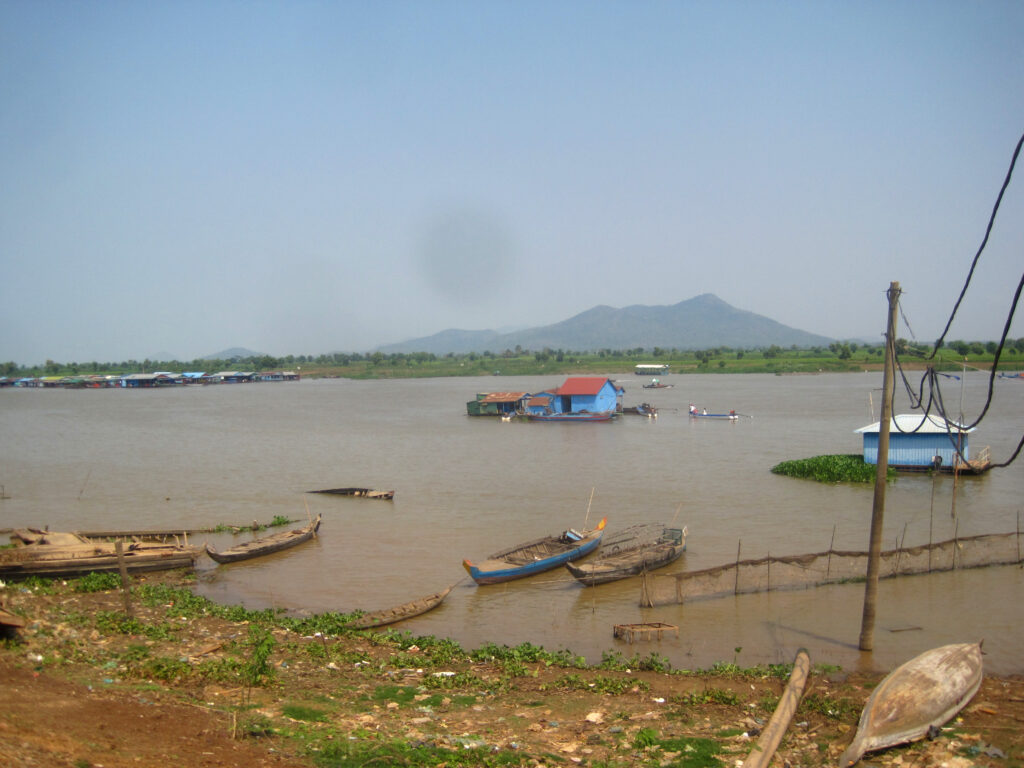you provide some information
Tonle Sap Lake is very important for Cambodia for several reasons:
1. **Fishing**: It is the largest freshwater lake in Southeast Asia and a major source of fish, providing food and income for millions of Cambodians.
2. **Agriculture**: The lake’s flooding cycles create fertile soil for farming, especially for rice, which is a staple food in Cambodia.
3. **Biodiversity**: Tonle Sap is home to many species of fish, birds, and other wildlife, making it an important ecological area.
4. **Water Supply**: It provides water for drinking, cooking, and irrigation for nearby communities.
5. **Culture and Tradition**: The lake supports traditional lifestyles and cultures of people living in floating villages around it.
In summary, Tonle Sap Lake is crucial for Cambodia’s food, water, economy, and cultural heritage.

###########
###########
A more elaborate background information
Tonle Sap, the largest freshwater lake in Southeast Asia, holds immense significance for Cambodia due to its ecological, economic, and cultural roles. Here’s a detailed overview of its importance:
1. **Biodiversity**
– Tonle Sap is one of the most biodiverse regions in the world, supporting a vast array of wildlife, including over 200 species of fish, numerous bird species, reptiles, and mammals. This biodiversity is crucial for maintaining the ecological balance and health of the region.
2. **Flood Pulse System**
– The unique flood pulse system of Tonle Sap, where water levels rise and fall dramatically between the wet and dry seasons, creates a highly productive environment. This natural cycle replenishes nutrients and supports fish breeding and agricultural activities.
3. **Wetland Ecosystem**
– The lake’s wetland ecosystem acts as a natural water filtration system, improving water quality by trapping sediments and pollutants. It also provides flood protection, reducing the risk of damage to surrounding areas.
### Economic Importance
1. **Fisheries**
– Tonle Sap is the heart of Cambodia’s fishing industry, contributing to approximately 75% of the country’s inland fish catch. The lake supports the livelihoods of millions of Cambodians who rely on fishing as their primary source of income and food.
2. **Agriculture**
– The fertile floodplains around Tonle Sap are ideal for rice cultivation, supporting the agricultural economy. The seasonal floods deposit nutrient-rich sediments, enhancing soil fertility and boosting crop yields.
3. **Tourism**
– Tonle Sap attracts numerous tourists due to its unique hydrological phenomena, floating villages, and rich biodiversity. Ecotourism and cultural tourism around the lake provide significant revenue and employment opportunities for local communities.
### Cultural Significance
1. **Floating Villages**
– The floating villages on Tonle Sap are a testament to the unique way of life adapted to the lake’s seasonal changes. These communities have developed distinct cultural practices, traditions, and architectures that are integral to Cambodia’s cultural heritage.
2. **Historical Importance**
– Tonle Sap has been central to Cambodia’s history and civilization, influencing the development of the Khmer Empire. The Angkor Wat temple complex, a UNESCO World Heritage site, relies on the water system of Tonle Sap and its rivers.
3. **Spiritual and Religious Significance**
– Many Cambodian myths, legends, and religious practices are associated with Tonle Sap, reflecting its deep spiritual significance. The lake and its waters are often revered in local traditions and ceremonies.
### Environmental Challenges
Despite its importance, Tonle Sap faces several environmental challenges, including:
– **Overfishing**
– Unsustainable fishing practices threaten fish populations and the livelihoods of local communities.
– **Pollution**
– Industrial, agricultural, and domestic pollution degrades water quality and affects the health of the ecosystem.
– **Climate Change**
– Altered weather patterns and rising temperatures impact the lake’s flood pulse system, affecting biodiversity and agricultural productivity.
– **Hydropower Development**
– Dams on the Mekong River and its tributaries disrupt the natural flow of water, affecting the seasonal flooding essential for the lake’s ecology and fisheries.
### Conclusion
Tonle Sap is vital for Cambodia due to its multifaceted role in supporting biodiversity, providing economic benefits, and preserving cultural heritage. Ensuring the sustainability of this crucial resource requires concerted efforts to address environmental challenges and promote sustainable management practices.